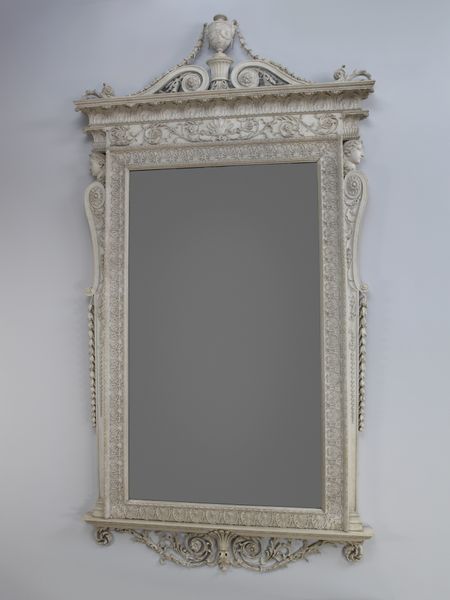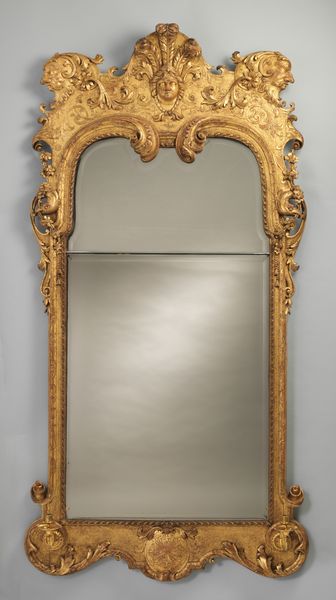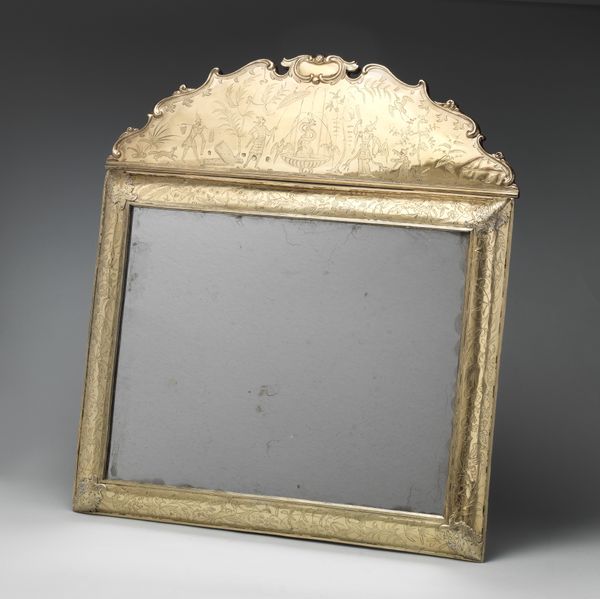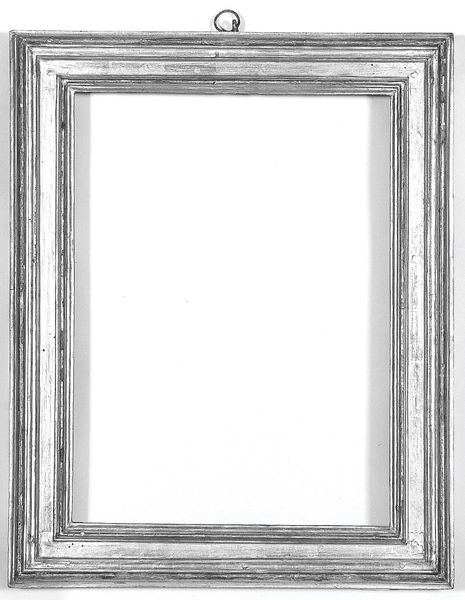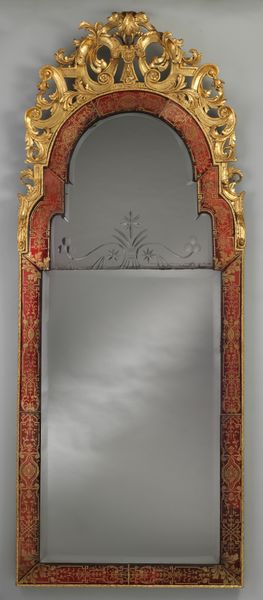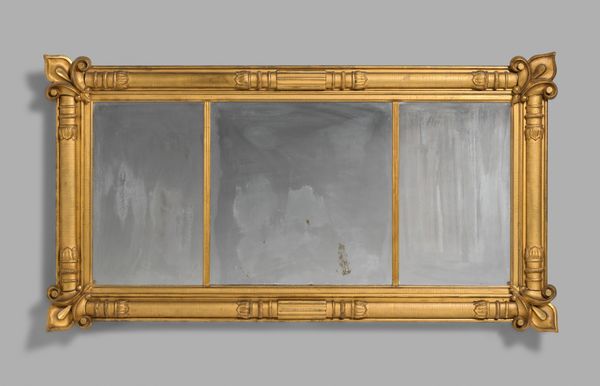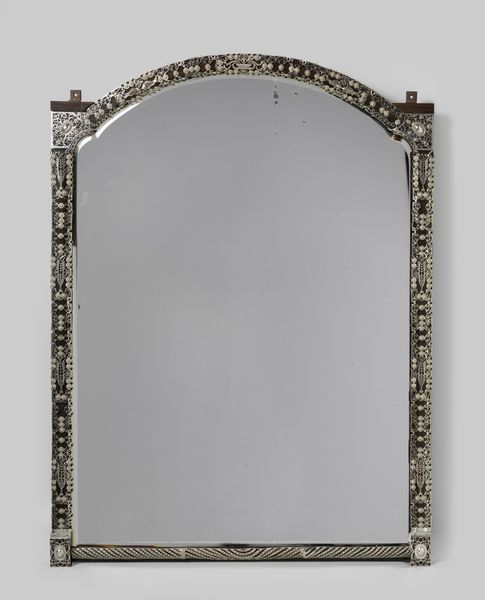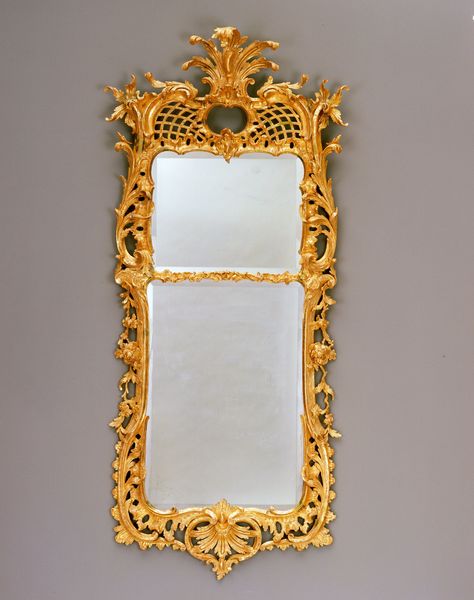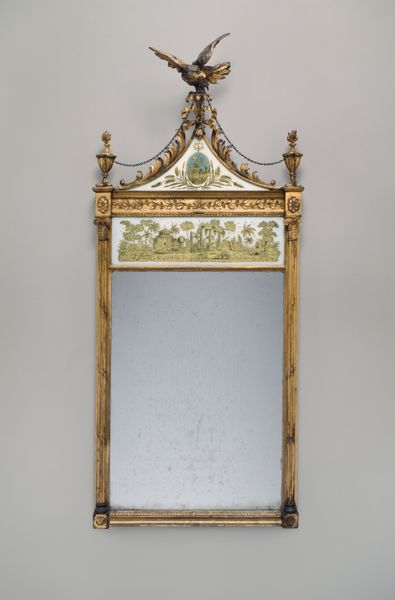
metal, guilding, architecture
#
portrait
#
neoclacissism
#
metal
#
guilding
#
form
#
united-states
#
architectural
#
decorative-art
#
architecture
#
realism
Dimensions: 65 3/16 x 35 1/2 in. (165.6 x 90.2 cm)
Copyright: Public Domain
Curator: Take a moment to observe "Looking Glass," crafted sometime between 1829 and 1835 by Isaac Platt. It resides here with us at the Metropolitan Museum of Art. Editor: My immediate thought? That’s a serious amount of gilding. Almost opulent, but something about the proportions keeps it grounded. What material is that frame actually made from underneath all that gold? Curator: Platt worked primarily with wood, as was typical, using the gilding to elevate the piece into the realm of luxury and suggest associations with classical precedents that were popular at the time. It speaks volumes about the aspirations of its original owner. Editor: Absolutely. That neoclassical craving. But consider the labor involved! Think about the tradespeople who sourced the timber, prepped the wood, and laid on the gilding, sheet by careful sheet. Were these individual artisans, or early factory workers contributing to mass production? That impacts its aura profoundly. Curator: The guilding definitely alludes to wealth. In that period, this would be destined for the home of a prominent member of society seeking to broadcast refinement through careful furnishing. But beyond mere display, consider the role of a looking glass—it reflects society's evolving ideals of beauty and self-presentation, influencing social behaviors around image and identity. Editor: Interesting, but who decided what "refinement" looked like? Wealth and social power determine whose reflection gets centered, quite literally. The craftsmanship might indicate someone further down the social ladder doing the work to manufacture a class ideal. Was the mirror clear, flawed, mass produced? Because all these details impact the material object and meaning embedded in that reflective moment. Curator: And Platt was tapping into a wider artistic trend, channeling neoclassical tastes to appeal to consumers, helping spread an image of American artistic sophistication to both domestic and international audiences. Editor: So, a symbol of aspiration, built on the backs of sometimes unseen labour. It's compelling to examine this object with an understanding of class dynamics that underpinned the production and use of these objects. That careful balance is where this piece starts to speak profoundly. Curator: It becomes more than mere furniture then, doesn't it? A potent indicator of how art shapes our understanding of social order, from design to placement in society. Editor: Indeed. A reminder that objects, and our reflections in them, carry stories of production, labor, and class that can be uncovered through careful analysis.
Comments
No comments
Be the first to comment and join the conversation on the ultimate creative platform.

